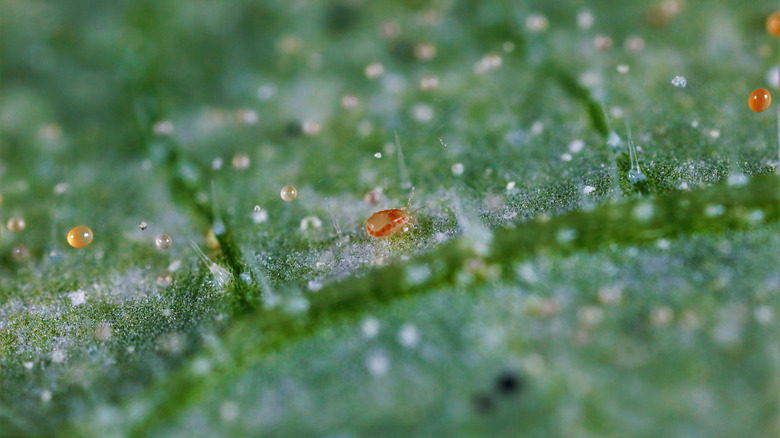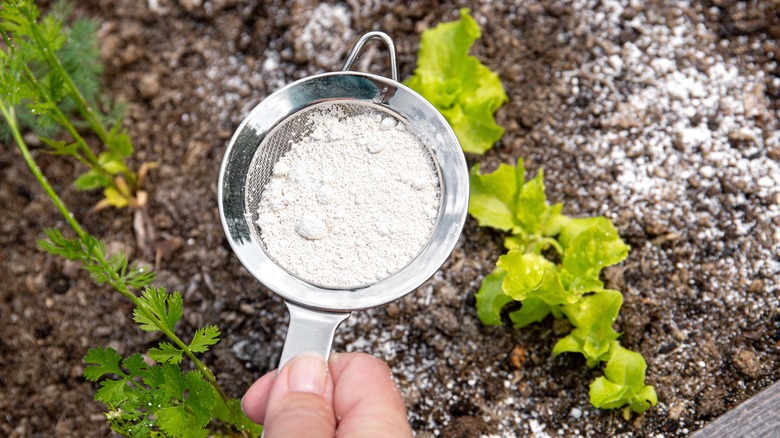Dealing with red spider mites on your cucumbers can feel like a race against time. These tiny troublemakers, with their reddish-brown bodies, are masters of disguise. If you look closely, you’ll see that they’re no bigger than a speck. They prefer to lurk on the undersides of your cucumber leaves. Although small and hard to spot, red spider mites can cause significant damage to your plants. They thrive in the same warm, dry conditions that cucumbers love, rapidly multiplying into the hundreds and potentially turning a small problem into a major infestation. To tackle these pests, you’ve got a few options. Planting certain repellent plants, using natural predators, or applying organic substances like diatomaceous earth can be effective. You might also need to consider insecticides as a last resort. We’ll get into the nitty-gritty of these methods shortly.
First, it helps to understand what damage these red spider mites can cause. The first signs of spider mite-inflicted damage usually come as light-colored dots on the leaves, where the mites have been feeding. As they continue to feast on your plants, the leaves might start turning yellow, even bronze, and might eventually fall off. In severe cases, you’ll see fine webs covering the leaves — a surefire sign of a serious mite infestation. The key here is swift action. Regularly inspecting your cucumber plants and taking decisive steps at the first sign of an infestation are crucial ways to avoid disaster. You can then devise an effective strategy to get rid of spider mites.
Natural methods and predators

A great starting point for controlling red spider mites is to place garlic cloves near your cucumbers. The garlic provides a natural against the mites. However, if you prefer a more hands-on approach to pest control and don’t mind unleashing even more insects on your plants, introducing natural predators into your garden can be a game-changer. Among these predators, lacewing larvae and minute pirate bugs are common choices, but there’s a standout contender: the western predatory mite. They can hunt down and consume spider mites without causing harm to your cucumber plants. They act as nature’s pest controllers, keeping the spider mite population in check. However, there’s a delicate balance to maintain. If pest mites become scarce, predatory mites might either starve or migrate elsewhere in search of food, leaving your plants unprotected. Therefore, precise timing is crucial when introducing these predators into your garden.
Western predatory mites thrive in hot, dry conditions, making them well-suited for dealing with spider mites in many garden environments. These beneficial mites hunt and consume spider mites without damaging your plants. Importantly, they don’t become pests themselves. However, there’s a catch: if pest mites are not available, predatory mites will either starve or leave in search of food. Therefore, it’s crucial to introduce these predators at the right time and avoid using insect sprays that might harm them. This method requires a delicate balance but can be incredibly effective in maintaining the health of your cucumber plants.
Horticultural oils and diatomaceous earth

If predators haven’t yielded the desired results or if you’re too skittish to procure more bugs, horticultural oils are a reliable solution. These oils, whether petroleum-based or plant-based, offer an effective way to suffocate the red spider mites. According to a 2024 study published in the journal Crop Protection, neem oil interferes with the feeding and fertility of spider mites. A significant advantage of horticultural oils is their minimal impact on beneficial insects and the environment, making them a targeted and eco-friendly choice compared to traditional insecticides. Additionally, you can use acaricides — these are plant extracts that have been specially formulated to kill mites. They’re usually formulated with chemicals and extracts such as clove, garlic, and rosemary. These natural acaricides usually disrupt the mites’ nervous system. That being said, when using these extracts, it’s important to follow the application instructions carefully to prevent harming the plants you’re trying to protect.
Diatomaceous earth is another natural and effective method to combat red spider mites. This powdery substance works by dehydrating the mites upon contact. When applying the powder, it’s essential to cover the plant thoroughly, as the mites need to come into direct contact with it to be effective. Ensure you use food-grade diatomaceous earth, as it is less toxic to humans and pets. It’s also advisable to use a mask when applying it, as inhaling the dust can be irritating.



